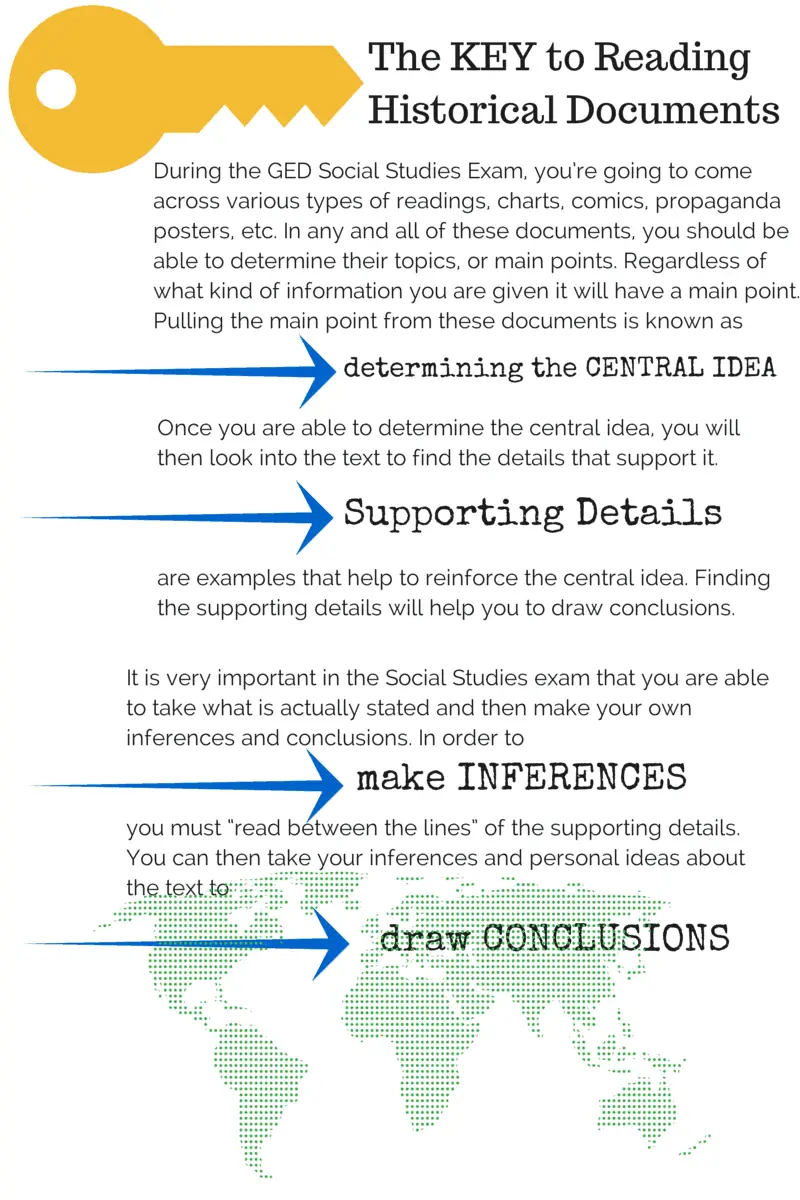Part One: How to Read Historical Documents
Take a moment to read over the following information about the GED® Social Studies Exam:

Part Two: Practice Questions
Read the excerpt from Franklin D. Roosevelt’s speech after the bombing of Pearl Harbor:

1. Which of the statements best summarizes the central idea of the speech?
A. The Japanese government should be ashamed of their actions and apologize to America.
B. America will not sit idly and allow Japan to strategically attack its’ country without retaliation.
C. The President feels terribly guilty that he allowed this attack to happen to his people.
Answer:B. America will not sit idly and allow Japan to strategically attack its’ country without retaliation.
2. Which of these details supports the speech’s central idea?
A. The United States is ready to make an alliance with Japan in order to avoid future terrorist attacks.
B. The Japanese attack on Pearl Harbor was strategically planned and carried out to intentionally harm the U.S.
C. America is aware of Germany’s treatment of their people and is ready to join the war.
Answer:B. The Japanese attack on Pearl Harbor was strategically planned and carried out to intentionally harm the U.S.
3. Which of these conclusions can be supported by the President’s speech?
A.The American citizens are still unaware of what entering into a war will actually entail.
B. The President will make whatever decisions he feels necessary despite the criticism from American citizens.
C. The American government will do whatever necessary to protect their country and its citizens from another attack.
Answer:C. The American government will do whatever necessary to protect their country and its citizens from another attack.
